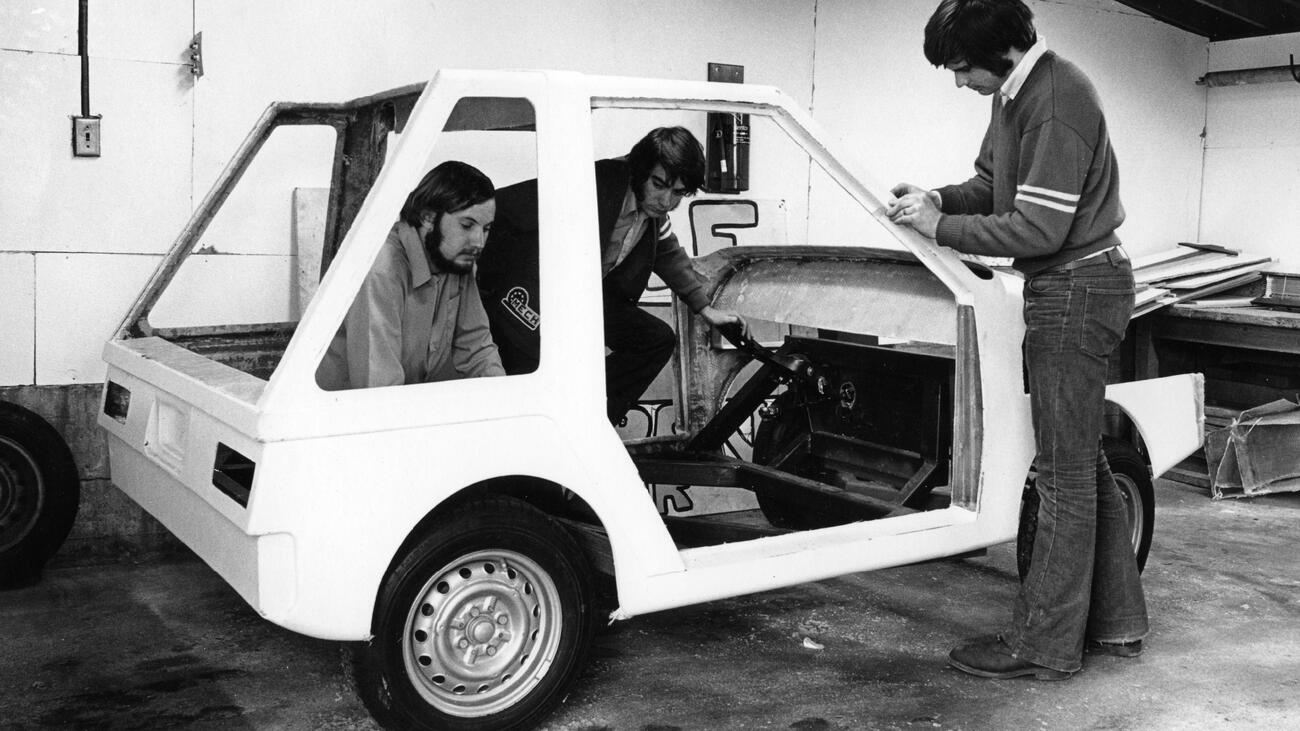Rewind
The Wally Wagon
A sustainable car designed by UBC engineers in 1972 was years ahead of its time.
In 1971, 150 UBC engineering students set themselves a challenge: to design and build “the ideal urban vehicle.” By 1972, they had their creation: a natural-gas powered car designed to cut pollution by 95 per cent compared to gasoline. They dubbed it “the Wally Wagon” in honour of UBC president and beloved engineering professor Walter Gage.
The Wagon was small but mighty. According to project coordinator Don O’Conner, the car could carry “two people and eight bags of groceries” in style, protected by innovative safety features – like a “drunk test,” requiring the driver to pass a reflex check and open combination locks before the car would start.
The Wally Wagon dazzled, sweeping the 1972 continent-wide Urban Vehicle Design Competition, where it beat over 92 other student entries to win the prize for overall design excellence. The Wally Wagon returned in a triumphant glow. It was displayed at the PNE, set out on a tour of BC, and inspired future generations of sustainability projects at UBC, like a redesign of Vancouver busses and the 1979 creation of an entirely battery-powered car called “the son of the Wally Wagon.”
Still, the illustrious car wasn’t above a good scandal. In 1973, in the dead of night, five SFU and BCIT students stole the Wally Wagon from the Point Grey campus. The heist was for a good cause: SFU students planned to hold the car ransom until its creators handed over a $200 donation to the Medical Aid for Vietnam Foundation. Mark Haynes of SFU, one of the Wally Wagon’s captors, told The Ubyssey that “the actual theft went off perfectly,” but “on reaching the bottom of Burnaby Mountain the RCMP seemed to come out of nowhere.” The cops turned the car around but congratulated the thieves on a deftly planned robbery.
Haynes assured the Wally Wagon’s creators that their prized car was towed “in complete safety,” at a pace never exceeding 30 miles per hour, but UBC engineers threatened to press criminal charges. Those charges were eventually dropped, perhaps inspired by The Ubyssey editorial board pointing out that UBC engineers were accomplished thieves themselves: “We recall recent engineering undergraduate society [EUS] acquisitions have ranged from the nine o’clock gun to Ubyssey columnists and the occasional boa constrictor. If criminal charges were laid in all cases involving EUS stunts, many hundreds of engineers would be getting practical experience engineering breakouts from the BC pen.”
































